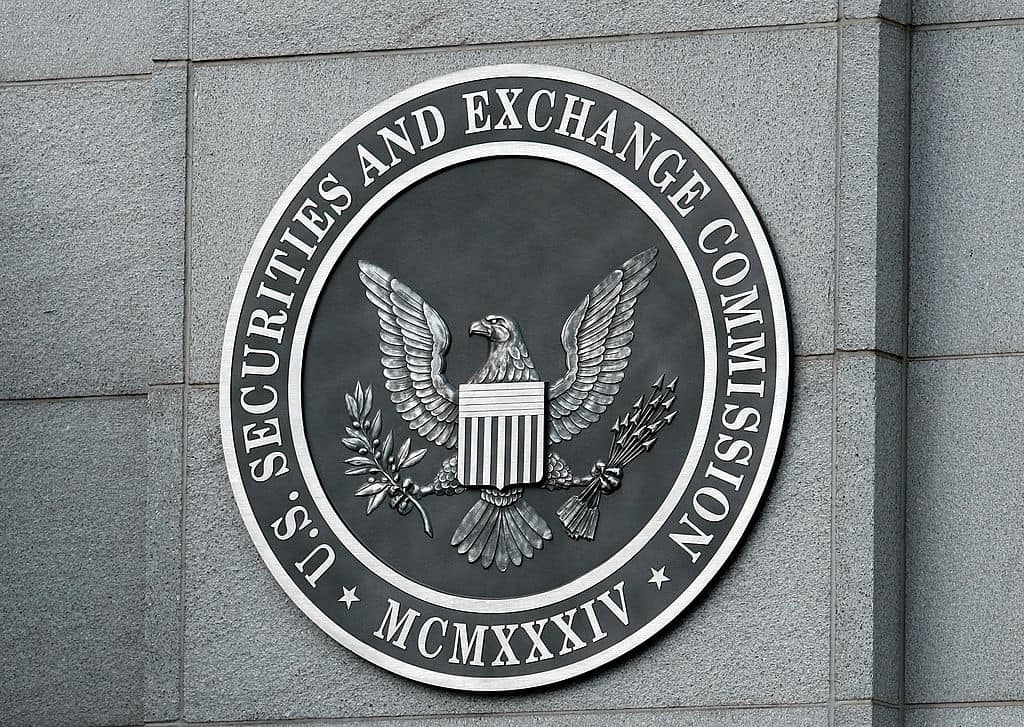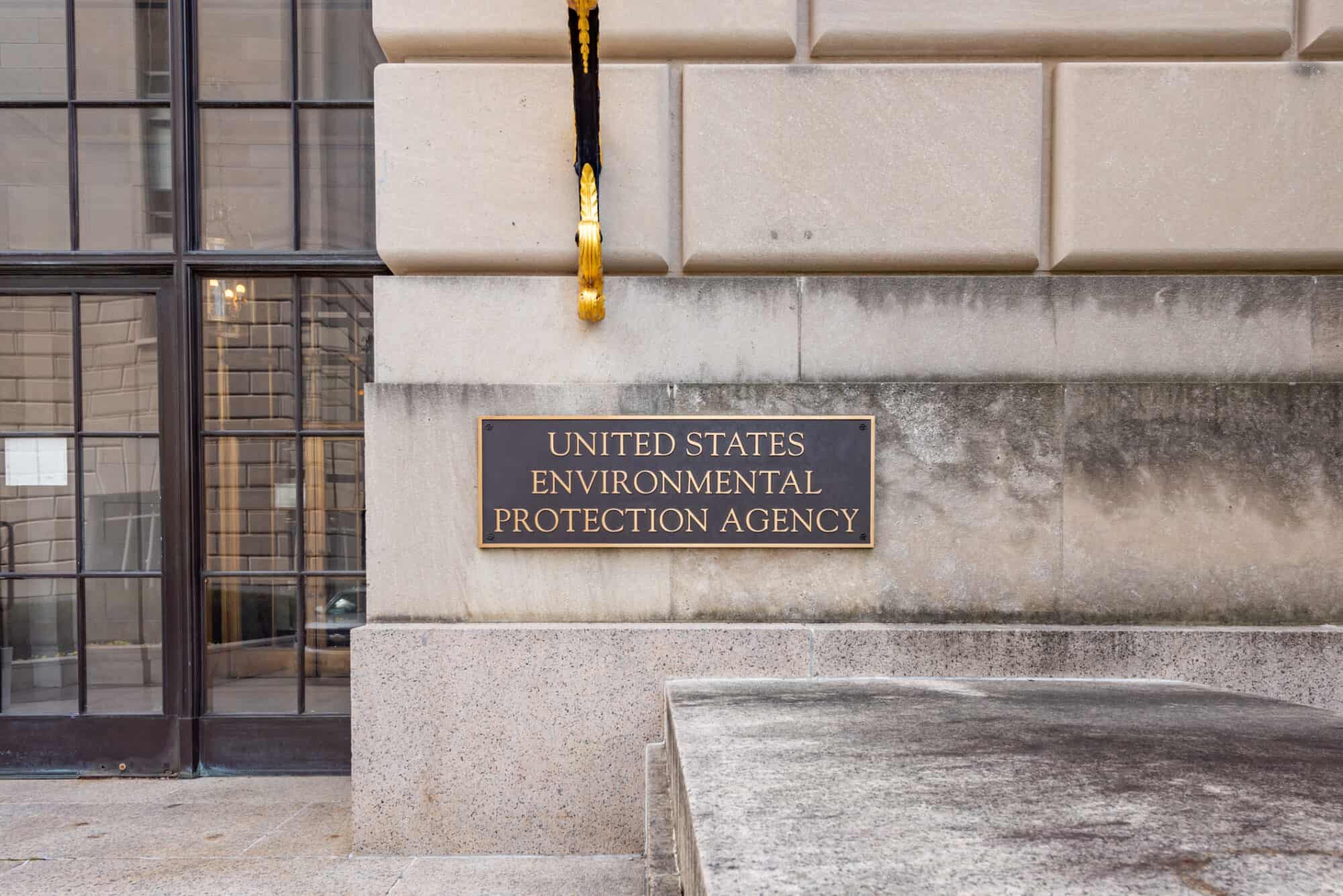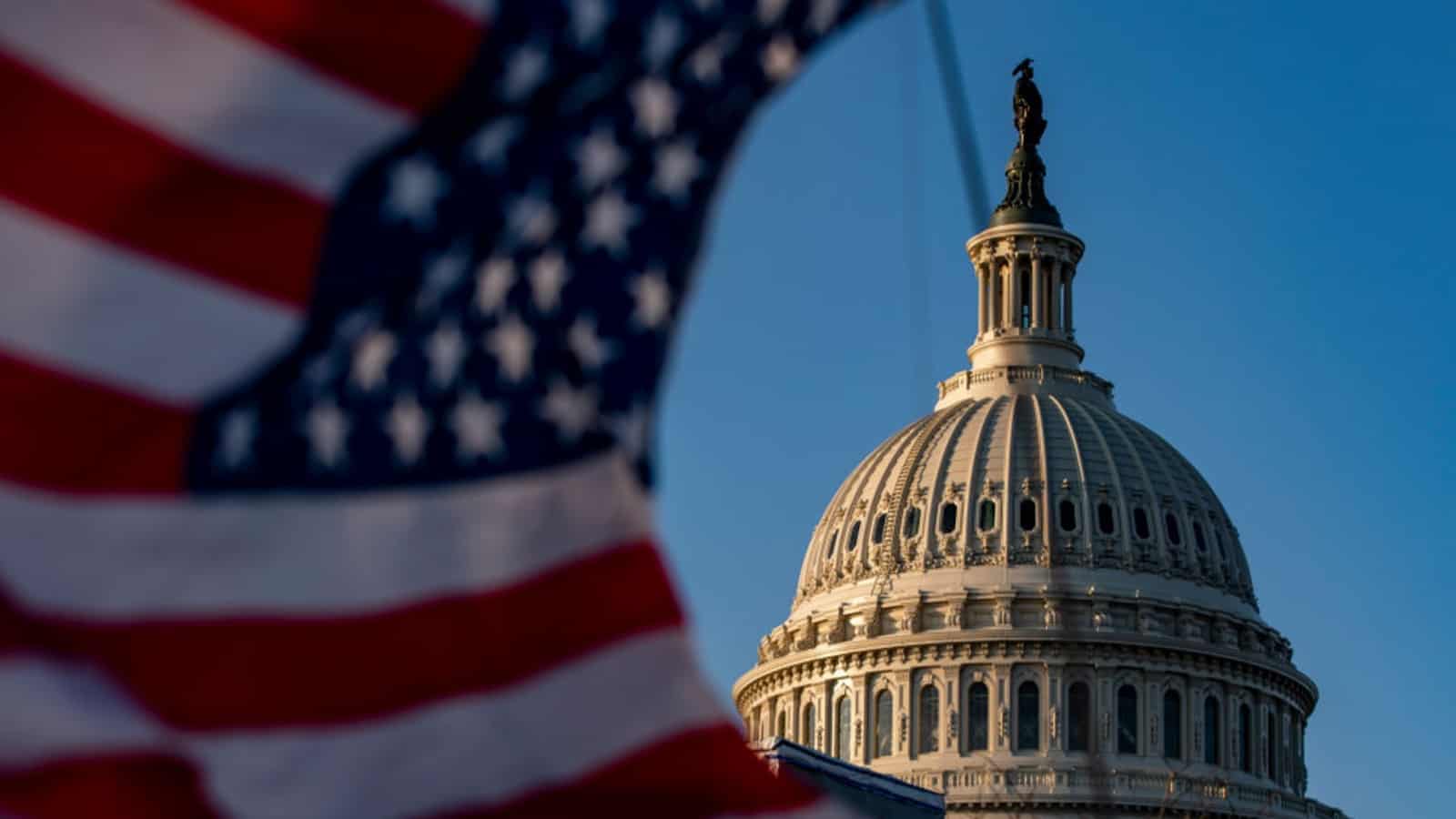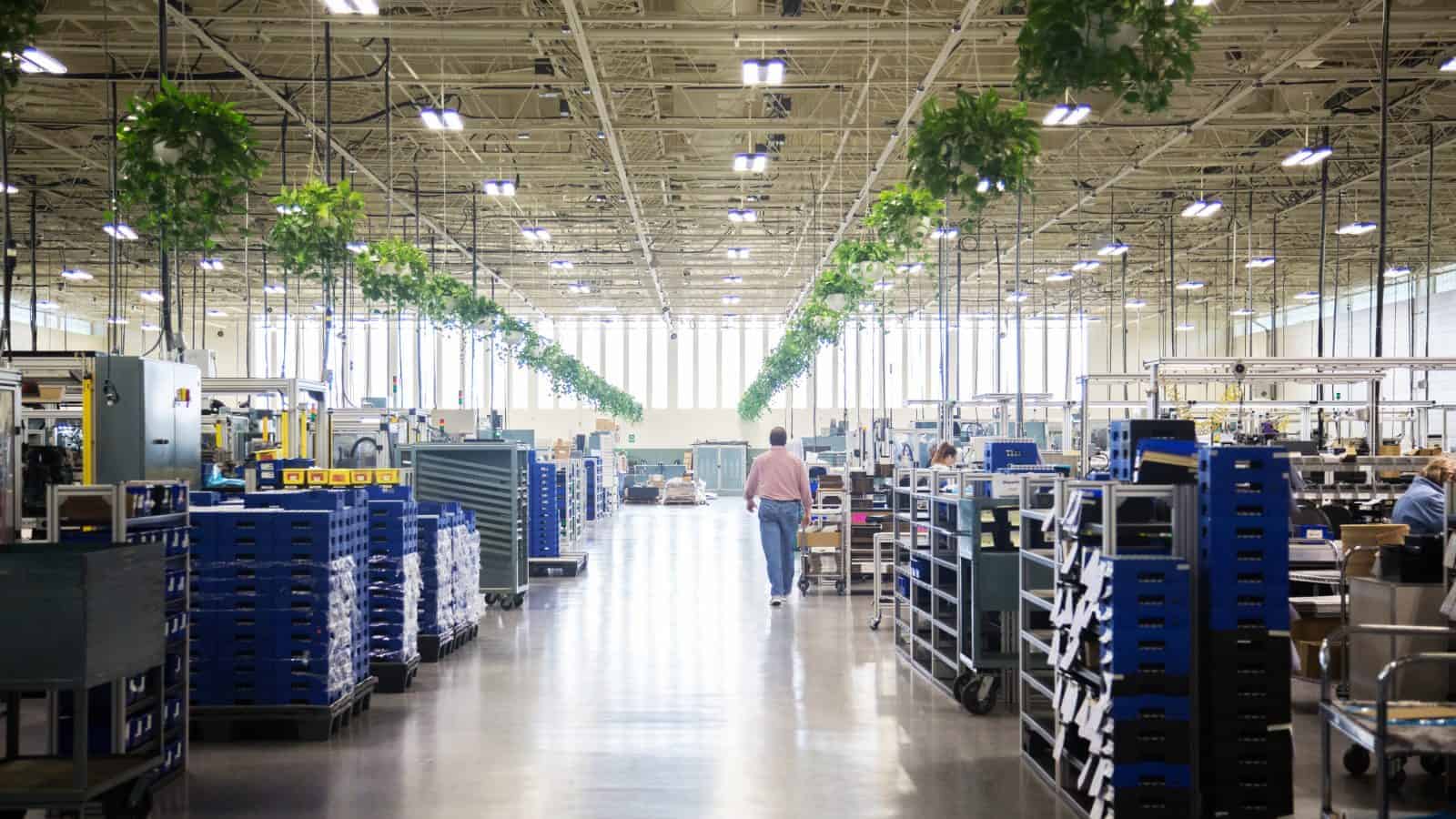Making the Business Case for Sustainability

Ecolab’s mission hasn’t changed much in more than 100 years. It’s still “bringing science to our customers in a way that drives performance, productivity and less water and energy use.”
- That’s according to Ecolab Chief Sustainability Officer Emilio Tenuta, who says being climate-minded is not only “the right thing to do,” but also at the core of the St. Paul, Minnesota–headquartered water, hygiene and infection-prevention company’s operating model.
A dual purpose: “We make the business case for why sustainability and [profitability] can go hand-in-hand when it comes to driving solutions,” Tenuta told us recently. “It’s why 48,000 Ecolab associates wake up every morning with the feeling, ‘We’re making a real difference in the world.’”
- Ecolab—which recently announced that 100% of its European operations are now powered by renewable energy sources—helps millions of customers worldwide reduce their environmental impact while promoting food safety, maintaining clean environments and optimizing resource use.
- “At Ecolab, we talk about eROI—Exponential Return on Investment,” Tenuta explained. “It’s about understanding that we have the ability to deliver on a business outcome—profitability—while also delivering an environmental impact.”
Don’t forget water: Often neglected in sustainability conversations, Tenuta said, is water. For a full picture of the effect of conservation and innovation efforts on climate, water needs to be factored in.
- “Sometimes we forget the role that water plays in addressing climate change,” he continued. Depending on the type of manufacturing, up to 75% of energy is driven by the water systems. You have to heat it, treat it, pump it, cool it. …Water doesn’t necessarily get the same headlines as climate, but if you follow the water, that’s going to have a lasting impact” on the environment, while also saving you money.
A holistic approach: In addition to being recognized regularly for its environmental stewardship, Ecolab is routinely named to most-ethical-company lists. That’s no accident; to the company, caring for the planet goes hand-in-hand with caring for people, Tenuta told the NAM.
Read the full story here.
EPA Awards $20 Billion in “Green Bank” Funds

The EPA late last week awarded $20 billion to community development banks and nonprofit organizations to combat climate change in disadvantaged communities in the U.S., the Associated Press reports.
What’s going on: Money from the “green bank” initiative “could fund tens of thousands of eligible projects ranging from residential heat pumps and other energy-efficient home improvements to larger-scale projects such as electric vehicle charging stations and community cooling centers.”
- Previously called the Greenhouse Gas Reduction Fund, the $27 billion “green bank” overseeing the grants was created by the 2022 Inflation Reduction Act. Its aim is “to reduce climate and air pollution and mobilize public and private capital in the communities that need it most.”
Where the money went: At least $14 billion of the funding is reserved for low-income and rural areas, neighborhoods of color and communities with shuttered coal mines, among other locations.
- One of the bank’s funds is the National Clean Investment Fund. Grants from that pot include nearly $7 billion to help consumers, schools and small businesses and farms, $5 billion to “leverage the existing and growing national network of green banks” and $2 billion for decarbonized, affordable housing, according to Axios.
- Another fund, the $6 billion Clean Communities Investment Accelerator, is for centers that offer technical help and lending to clean-technology projects.
How it works: “Recipients committed to spending $7 in private sector funding for each $1 from the federal investment money, to ‘reduce or avoid’ 40 million metric tons of carbon dioxide each year and earmark 70% of the money for disadvantaged and low-income communities. These groups are often passed over by commercial banks and investors yet are disproportionately impacted by climate change.”
SEC Finalizes Scaled-Back Climate Rule

The Securities and Exchange Commission has approved new climate disclosure requirements that have been in the works for the past two years. Changes made to the rule represent progress for manufacturers—though the industry will still face new cost burdens, the NAM said Wednesday night.
What’s going on: The SEC voted Wednesday in favor of requiring public companies to disclose greenhouse gas emissions and other climate-related information. Thanks in part to ongoing NAM advocacy—which Law360 (subscription) covered this week—the agency dropped its onerous, unworkable Scope 3 emissions mandate.
- That provision would have forced public companies to divulge information about emissions coming from anywhere in their supply chains—including from small and family-owned businesses.
Heeding the NAM: “The NAM demonstrated for the SEC the practical realities of such a sweeping proposed rule, encouraging the SEC to make significant changes to remove inflexible and infeasible mandates, require disclosure only of material information and protect small manufacturers from the impact of these requirements,” NAM President and CEO Jay Timmons said following the vote.
Key changes: In addition to the Scope 3 change, the SEC exempted smaller public companies from Scope 1 and Scope 2 emissions reporting and delayed the rule’s effective dates. The final rule also is more narrowly focused on so-called “material” information (data investors need to make informed decisions) than what had been proposed previously.
Keeping a close watch: The final rule “remains imperfect,” Timmons continued. “[A]nd it remains to be seen whether the rule in its entirety is workable for manufacturers.”
- “The NAM remains committed to ensuring the SEC acts within its statutory authority, prioritizes flexibility and provides much-needed guidance—just as we are committed to providing leadership in addressing environmental challenges. This is why the NAM is keeping all options on the table as we evaluate the rule’s potential impacts on the manufacturing sector.”
NAM, Allies File Suit Against EPA Over Air Standard

The NAM and seven association partners have filed suit against the Environmental Protection Agency to challenge the office’s overly stringent, recently finalized rule on particulate matter, or PM2.5, the NAM said Wednesday.
What’s going on: The eight groups filed suit in the D.C. Circuit to push back on the EPA’s National Ambient Air Quality Standards rule, which last month it lowered from 12 micrograms per cubic meter of air to 9, a 25% reduction and a stifling burden on manufacturers, the NAM said.
- “In pursuing this discretionary reconsideration rule, the EPA should have considered the tremendous costs and burdens of a lower PM2.5 standard,” said NAM Chief Legal Officer Linda Kelly. “Instead, by plowing ahead with a new standard, the agency not only departs significantly from the traditional NAAQS process, but also gravely undermines the Biden administration’s manufacturing agenda—stifling manufacturing investment, infrastructure development and job creation in communities across the country.”
- Participating in the suit with the NAM—which has repeatedly urged the EPA against overtightening the standard—are the American Chemistry Council, the American Forest & Paper Association, the American Petroleum Institute, the American Wood Council, the U.S. Chamber of Commerce, the National Mining Association and the Portland Cement Association.
Why it’s important: If it’s enacted, the stricter PM2.5 standard would cost businesses and the U.S. economy huge sums, hampering company operations and job growth and forcing tough choices on states and towns nationwide.
- The total cost of complying with the new acceptable concentration level could be as much as $1.8 billion, according to the EPA’s own estimates—and that number could go up.
- What’s more, it would make the U.S. less competitive globally. “Europe’s current PM standard is 25; China’s is 35,” NAM Managing Vice President of Policy Chris Netram told the House Energy and Commerce Subcommittee on Environment, Manufacturing and Critical Materials last month. “If we want the next manufacturing dollar to be spent in America rather than abroad, a standard of 9 is simply not feasible.”
NAM in the news: The New York Times (subscription) covered the lawsuit.
Manufacturers Challenge EPA’s Untenable Air Standard in Court
The NAM Legal Center has sued to block the rule
Washington, D.C. – Today, the National Association of Manufacturers joined a coalition of other major business trade associations to file suit in the D.C. Circuit to challenge the Environmental Protection Agency’s misguided final rule lowering the National Ambient Air Quality Standards for fine particulate matter (PM2.5) to 9 micrograms per cubic meter.
The EPA finalized this provision—a 25% reduction from the current standard effective on a truncated timeline of 60 days—outside of the Clean Air Act’s normal five-year review cycle, becoming the first administration to redo a promulgated NAAQS.
“In pursuing this discretionary reconsideration rule, the EPA should have considered the tremendous costs and burdens of a lower PM2.5 standard,” said NAM Chief Legal Officer Linda Kelly. “Instead, by plowing ahead with a new standard that is vastly more restrictive than any other national standard, including that set by the EU, the agency not only departs significantly from the traditional NAAQS process, but also gravely undermines the Biden administration’s manufacturing agenda—stifling manufacturing investment, infrastructure development and job creation in communities across the country. The NAM Legal Center is filing suit to protect manufacturers’ ability to obtain permits, expand facilities and pursue long-term investment plans, and defend our country’s competitive advantage.”
Background:
- The Clean Air Act requires the EPA to review the NAAQS every five years to determine whether the PM2.5 standard should be retained or revised. The EPA’s revised standard was done in an out-of-cycle reconsideration.
- In December 2020, following a complete review of the PM NAAQS, the EPA decided to retain the PM2.5 standard of 12 micrograms per cubic meter. But in June 2021, the agency announced it would reconsider that decision.
- The NAM submitted comments urging the EPA to maintain the existing standard. The EPA recently reported that PM2.5 concentrations have declined by 42% since 2000, driven by major emissions reductions from both mobile sources and the power sector.
- Notably, the EU standard is currently 25, and a proposal there would be to reach 10 by 2030. The UK has a target of 10 by 2040.
- The EPA itself says that some 70% of particulate matter comes from nonmanufacturing sources, such as wildfires (29%), agriculture and prescribed fires (15%), crop and livestock dust (12%), unpaved road dust (10%), paved road dust (3%) and “dust” (2%).
-NAM-
The National Association of Manufacturers is the largest manufacturing association in the United States, representing small and large manufacturers in every industrial sector and in all 50 states. Manufacturing employs nearly 13 million men and women, contributes $2.85 trillion to the U.S. economy annually and accounts for 53% of private-sector research and development. The NAM is the powerful voice of the manufacturing community and the leading advocate for a policy agenda that helps manufacturers compete in the global economy and create jobs across the United States. For more information about the NAM or to follow us on Twitter and Facebook, please visit www.nam.org.
Previewing the State of the Union

With President Biden set to deliver the State of the Union address Thursday, manufacturing is likely to be in the spotlight once again. At the NAM, we will be listening closely for our key priorities—those that have been achieved and those still in progress.
Promises kept: President Biden has been a partner on a range of issues that are key to manufacturers across the United States. We hope he will outline how pro-growth legislation has helped set the stage for manufacturing growth, with industry employment reaching a 15-year high.
- CHIPS Act: The CHIPS and Science Act marked a major push to boost manufacturers’ competitiveness, supporting large and small businesses up and down the supply chain by investing in domestic semiconductor production and funding programs to support the STEM workforce, advanced technology development, excavation of critical minerals, clean energy and more.
- Bipartisan Infrastructure Bill: President Biden secured a bipartisan $1.2 trillion infrastructure bill, a long-sought, major achievement for manufacturers throughout the country, offering transformational upgrades and significant investments in America’s manufacturing capabilities.
- Inflation Reduction Act: Some of the provisions in the Inflation Reduction Act supported manufacturers across the United States, with direct investments and tax credits generating a major increase in manufacturing construction and jobs.
- Ukraine: The Biden administration has been unwavering in its support of Ukraine. The NAM—which in March 2022 passed a unanimous resolution denouncing Russia’s invasion of the country—has kept the pressure on Congress to pass the stalled Ukraine aid bill.
Progress to come: But this progress will be undermined if the Biden administration continues to issue onerous regulations and call for policies that make it harder to innovate, invest and expand in America. The NAM is working hard to push back against items that would harm manufacturers and encourage the president to refrain from pursuing policies that will make us less competitive.
- Taxes: The NAM is pushing back against any new taxes or attempts to increase tax rates on manufacturers, and we are pressing for tax policies that will make it easier to invest in the future—including the “tax trifecta” found in the recently House-passed Tax Relief for American Families and Workers Act. The NAM urges the Senate to approve these business tax provisions quickly.
- Protecting intellectual property: Late last year the administration proposed invoking “march-in” rights to seize the patents of any products it deems too costly—if those innovations were developed in any part with federal dollars. This move, which would open the door to similar actions in other sectors of manufacturing, would undermine manufacturers’ IP rights, disincentivize early-stage entrepreneurship and dissuade capital investment, all of which could jeopardize our ability to develop future cures. This is just one example of how actions that undermine manufacturers’ IP can have dangerous unintended consequences.
- Regulations: Burdensome rules—such as the tighter National Ambient Air Quality Standards from the Environmental Protection Agency and the Department of Energy’s recent freeze of liquefied natural gas export permits—are preventing manufacturers from creating jobs and harming U.S. competitiveness. We need to end the regulatory onslaught and give manufacturers the chance to grow.
- Energy: Manufacturers in America are at the forefront of the planet’s work to reduce emissions and promote sustainable energy. But to be effective, we need to embrace an all-of-the-above energy strategy that uses the fuel we have while developing the tools we need.
- Immigration: Immigration and border security reforms must be a priority for the administration and Congress. Inaction poses significant economic risks—especially at a time when manufacturers have 600,000 open jobs. Manufacturers are leading on bipartisan solutions, like those found in our A Way Forward plan.
The last word: “Our commitment is to work with anyone, and I truly mean anyone, who will put policy—policy that supports people—ahead of politics, personality or process,” said NAM President and CEO Jay Timmons. “Because here’s what I know: Manufacturers are building an incredible future for our country and our world. And we need partners in the federal government who will work with us to reduce burdens on manufacturers and manufacturing workers, rather than creating barriers to our success.”
Learn more: For more information on the state of manufacturing, check out the 2024 NAM State of Manufacturing Address here.
Regulatory Onslaught and Inaction on Key Manufacturing Priorities Weigh on Industry Ahead of State of the Union Address
Nearly 94% of respondents believe federal tax code should promote R&D, capital and equipment expenditures
Washington, D.C. – The National Association of Manufacturers released its Manufacturers’ Outlook Survey for the first quarter of 2024, which reveals that the expiration of federal tax incentives related to R&D, interest deductibility and expensing for capital investments has already caused nearly 40% of respondents to pull back on hiring and investing due to increased taxes.
“Manufacturers’ concerns in this survey should provide a stark warning to both parties ahead of the State of the Union: If you want to continue America’s manufacturing resurgence, focus on constructive policies to strengthen our industry—reinstating key tax provisions, achieving immigration solutions and advancing permitting reform. But if President Biden wants to put his manufacturing legacy at risk, nothing will do that faster than raising taxes on manufacturers or continuing this regulatory onslaught,” said NAM President and CEO Jay Timmons.
The latest data show that two-thirds (65.5%) of manufacturers said that rules coming from the Biden administration will be costly to implement. Additionally, amid the regulatory onslaught, concern about the overall business climate was elevated and not far from levels last seen at the end of 2016.
“President Biden and Sen. Britt will opine on their parties’ respective priorities, many of which manufacturers share. But actions speak louder than words. Congressional inaction and the stream of senseless regulations from the EPA and elsewhere are creating greater uncertainty for businesses, which hurts manufacturers’ ability to create jobs and raise wages. All of this is undermining manufacturers’ confidence and has the potential to drive investment away from the United States,” added Timmons. “Our commitment is to work with anyone who will put policy—policy that supports people—ahead of politics, personality or process.”
Overall, 68.7% of respondents felt either somewhat or very positive about their company’s outlook, edging up slightly from 66.2% in the fourth quarter. It was the sixth straight reading below the historical average of 74.8%.
Key Survey Findings:
- Nearly 94% of respondents say that it is important for the federal tax code to help reduce manufacturers’ costs for conducting R&D, accessing capital via business loans and investing in capital equipment purchases, with 58% saying that it is very important.
- The majority of respondents (72.4%) said that the length and complexity of the current permitting reform process affects their investment decisions in various degrees, with 38.9% suggesting that they were extremely or moderately impacted. In survey responses throughout 2023, manufacturers stated that reform to the current system could allow them to hire more workers, expand their business and increase wages and benefits.
- More than 65% of manufacturers cited the inability to attract and retain employees as their top primary challenge.
- An unfavorable business climate (58.9%), rising health care and insurance costs (58.2%) and weaker domestic economy and sales for manufactured products (53.2%) are also impacting manufacturing optimism.
You can learn more at the NAM’s online tax action center here.
The NAM releases these results to the public each quarter. Further information on the survey is available here.
-NAM-
The National Association of Manufacturers is the largest manufacturing association in the United States, representing small and large manufacturers in every industrial sector and in all 50 states. Manufacturing employs nearly 13 million men and women, contributes $2.85 trillion to the U.S. economy annually and accounts for 53% of private-sector research and development. The NAM is the powerful voice of the manufacturing community and the leading advocate for a policy agenda that helps manufacturers compete in the global economy and create jobs across the United States. For more information about the NAM or to follow us on Twitter and Facebook, please visit www.nam.org.
Previewing the SEC’s Climate Rule

For the past two years, the U.S. Securities and Exchange Commission has been considering a rule that would require businesses to report huge amounts of information about companies’ climate-related risks, strategies and impacts. As the SEC prepares to release its final version of the rule this Wednesday, we spoke with NAM Vice President of Domestic Policy Charles Crain about what manufacturers should expect.
The background: In March 2022, the SEC proposed what the NAM has called an overreaching, unworkable and burdensome climate disclosure rule. According to Crain, the initial proposal would have required extensive disclosures as well as invasive tracking procedures to gauge climate impact and emissions throughout companies’ supply chains—significantly increasing costs and liability for manufacturers.
- “The proposal would have had major implications for the entire manufacturing sector, including both large and small public companies—and even privately held businesses throughout manufacturing supply chains,” said Crain. “As proposed, the rule represents a significant threat to manufacturing competitiveness.”
The pushback: In the two years since the rule was first proposed, the NAM has pressed for significant changes—in detailed letters to the SEC, in congressional testimony and in meetings with SEC commissioners and staff.
- “Manufacturers have made it a top priority over the past two years to convince the SEC that they need to change their approach,” said Crain. “The NAM has spent significant time and effort explaining to the SEC why its proposal was unworkable and likely unlawful and illustrating the impact of the rule’s overwhelming cost burden on manufacturers.”
- “But we also offered specific and actionable suggestions to help the agency tailor the rule, make it more workable to manufacturers and bring it back within the SEC’s statutory authority.”
The preview: With the SEC set to publish its final rule tomorrow, Crain says the NAM is keeping an eye on key inflection points, including the following:
- Scope 3 emissions reporting: The proposal’s Scope 3 mandate would require public companies to disclose the emissions of their supply chain partners—including small and family-owned businesses. If Scope 3 is curtailed or absent, that would represent significant progress for manufacturers.
- Financial statement reporting requirements: The NAM will be tracking the degree to which companies are required to incorporate climate information into their financial statements. The NAM called the proposal’s approach to financial statement reporting “unworkable [and] highly burdensome.”
- Materiality: The SEC is only allowed by law to require “material” disclosures—i.e., financial information that allows investors to make informed decisions. Mandates in the final rule that require immaterial disclosures or seek to redefine materiality could exceed the SEC’s legal authority.
- Implementation: The NAM will consider when and how the rule takes effect, and whether the SEC has provided scaled requirements for smaller companies or tailored implementation plans for certain provisions within the rule.
- Small-business impact: The proposal would have harmed small and privately held businesses disproportionately. The SEC must do a better job at protecting these companies in the final rule.
The expectation: Crain says the NAM’s advocacy appears to have made a difference.
- “Recent news reports suggested that some provisions in the rule may have been modified in alignment with the NAM’s suggested changes,” said Crain. “But it remains to be seen whether the final rule, taken as a whole, is actually workable for manufacturers.”
The next step: The NAM’s next moves will depend on the specifics of the final rule—but the conversation is unlikely to end there.
- “The NAM has been clear that a failure to bring the rule back within the agency’s statutory authority could invite legal action. On the other hand, a balanced, workable rule could obviate the need for litigation,” said Crain.
- “Regardless of the exact content of the rule, the NAM is committed to providing resources to our members to help companies understand and comply with any new requirements. We will also continue to engage with the SEC and Congress to address any implementation issues, seek guidance on any unclear provisions and, if necessary, push for changes to the final rule.”
- “As we have for the past two years, the NAM will continue to advocate on manufacturers’ behalf.”
DOE, NAM Urge Flexible 45V Rules

The Department of Energy is urging Treasury to loosen proposed rules for the Inflation Reduction Act’s first tax credit—the 45V, or clean hydrogen tax credit, POLITICO Pro (subscription) reports.
- The request is in line with suggestions the NAM made to the Internal Revenue Service—which, with Treasury, set forth the guidance for claiming the credit—earlier this week.
What’s going on: “The Department of Energy is pushing Treasury to relax the rules to give the industry time to embark on a massive expansion, according to three people familiar with the discussions.”
- The 45V was intended as a longer-term accompaniment to the DoE’s $7 billion regional hydrogen hubs program, which agency officials are concerned will be hamstrung if the tax guidance is too stringent, according to the article.
- The credit “will directly impact how much hydrogen the U.S. produces and the financial bottom line for many companies.”
Why it’s important: The 45V is a major pillar of the Biden administration’s climate agenda, which seeks to make low-carbon hydrogen cost-effective enough to help decarbonize various industries, according to E&E News’ ENERGYWIRE (subscription).
The NAM’s view: “If implemented properly, the 45V credit would provide the certainty needed for manufacturers to make investment decisions that encourage further production, transportation and use of clean hydrogen,” NAM Vice President of Domestic Policy Brandon Farris said.
- “However, the NAM is concerned Treasury is considering renewable sourcing provisions regarding incrementality, temporal-matching and deliverability requirements, which would limit the amount of energy sources available to power the hydrogen production process.”
What should be done: To create a workable, fair 45V framework, Treasury and the IRS should do the following:
- Lengthen the three-year time frame for incrementality, the time frame within which new electricity must be put into service.
- Push back to 2032 (at the earliest) the date by which energy projects must match clean electricity and hydrogen production at an hourly level.
- Recognize energy attribute certificates from outside manufacturers’ own regions as capable of delivering electricity or natural gas into the region where the clean hydrogen production is taking place.
- Follow congressional intent and provide a more reasonable process for taxpayers to prove their food stocks are lower in carbon intensity and therefore eligible for the maximum credit.
Rio Tinto Copper Seeks to Power the Future

America’s fastest-growing industries increasingly rely on copper.
The critical minerals Rio Tinto produces play an essential role in making modern life work and help power the clean energy transition, said Rio Tinto Copper Chief Operating Officer Clayton Walker. “Think of increasing demand for things like electric vehicles, the copper plumbing in our houses … transmission lines, smartphones, electronic devices—the things you can’t live without all include copper.”
This criticality was brought home to the NAM during a site visit by leadership last Friday to the company’s Resolution Copper mine, an Arizona project with the potential to supply up to 25% of the nation’s copper demand.
Electrifying a revolution: Rio Tinto—which produces more than 10 different minerals and metals around the world—has copper operations in Utah and Mongolia with joint ventures in Chile and Peru and is working to open Resolution Copper and another copper-mining site, in Australia.
- These operations are going to become increasingly important as the world’s appetite for EVs grows, Walker told the NAM, because EVs require more copper than traditional vehicles.
- EV charging stations also require the metal, as do wind turbines, which “can contain up to 4.7 tons of copper,” according to Walker.
Speed permitting now: The U.S. consumes about 2 million metric tons of copper per year but produces just more than 1 million metric tons. However, “by 2035, that demand is estimated to be around 4 to 5 million tons of copper a year,” said Walker. “The question is, where are we going to get all that additional copper?”
- The answer, in his opinion, should be here at home. Once approved, Resolution Copper will be instrumental in making that happen. “The copper produced at Resolution would strengthen U.S. supply chains, reduce import dependency [and] add jobs, while employing world-class sustainability standards.”
- At that site, “we’ve been working on permitting for the last 11 years,” Walker continued. “The average time to permit [a mining project] in the U.S. is 17 to 20 years. That’s a long time. We’re not asking people to cut corners, but could we speed that process up?”
Critical minerals list: Policymakers could also help bolster copper and other critical materials production by harmonizing the efforts of numerous agencies to spur domestic production.
- For instance, the Interior Department curates a list of critical minerals that are “essential to the economic or national security of the U.S. and which have a supply chain vulnerable to disruption.” The Energy Department conducts critical materials assessments for materials vital for energy.
- Harmonizing these lists “would create more avenues for domestic supplies,” Walker said. “That would help projects get permitted faster and let us supply manufacturers with the minerals and materials they need sooner, including copper.”
Not your grandfather’s mining company: Another task on the company’s to-do list is changing the public’s perception of its industry.
- “We aren’t using pickaxes and wheelbarrows,” Walker laughed. “We have a control center that would rival NASA. We use drones, AI and autonomous equipment. Rio Tinto has the first fleet of driverless trucks in the world, and our team continues to leverage and benefit from high-tech innovation.”
- Effectively conveying the sophistication of their businesses is an ongoing task for manufacturers, Walker said. “We need to continue engaging with schools, educating and discussing the various trades and opportunities available while highlighting the potential within manufacturing—a career path that provides a great job with multiple opportunities.”
The last word: “It’s our responsibility to help show the next generation what opportunities are available,” Walker concluded.
